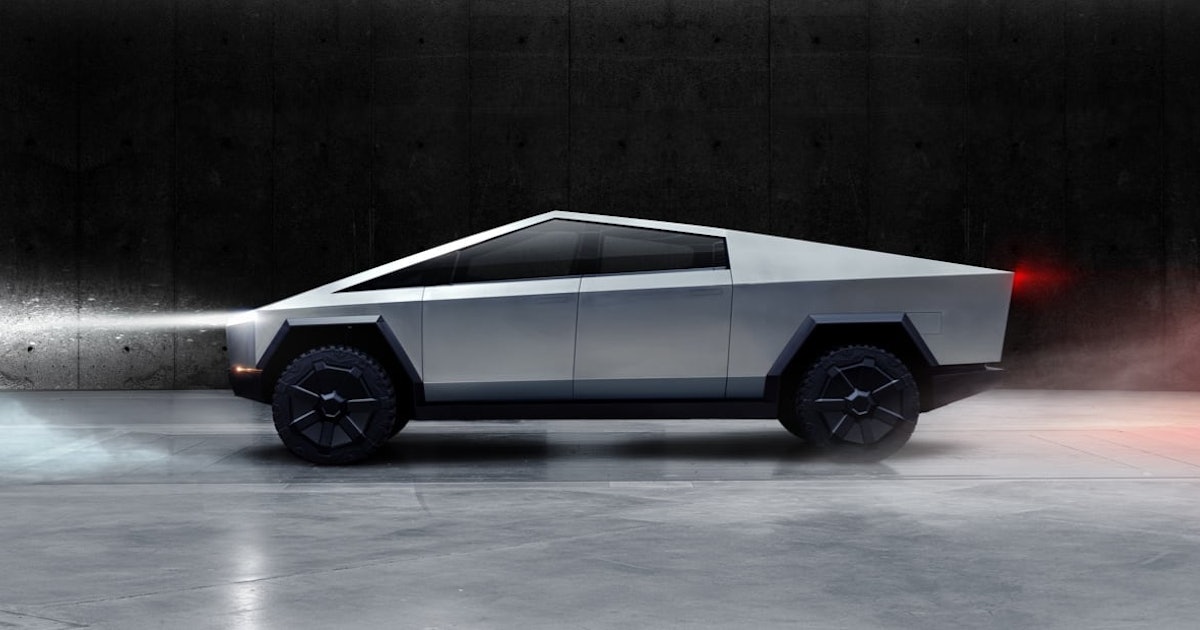
How Tesla’s liquid-cooled charging could give the Cybertruck a huge edge
There’s still an obvious downside to driving battery-powered EVs and that’s the long charge times — especially when compared to how fast you can fuel up a gas-powered car. EV charging technology is catching up though, and we might have comparable charge times thanks to innovations from Tesla.
At its Semi Delivery Event, Tesla’s CEO Elon Musk announced the company would use improved liquid-cooled fast chargers for its upcoming Semi, as well as the Cybertruck. This V4 Supercharger is expected to be much more efficient, which would better suit the larger power demands of its Semi and Cybertruck.
Considering how the technology works, it makes sense that liquid-cooled fast chargers would be the next step in making EVs more convenient. But how exactly do they work and will other automakers adopt them?
HOW DO LIQUID-COOLING FAST CHARGERS WORK?
The concept of liquid cooling is straightforward: you use liquid to cool down the heat generated from whatever is providing power. We see it most commonly with computers, but the same technology can be applied to EV fast chargers.
Much like a liquid-cooled PC, a liquid-cooled EV fast charger runs liquid through tubes near the elements that generate a lot of heat to prevent overheating. The more heat is dissipated through liquid cooling, the more power you can pulse through that same cable.
WHERE ARE WE WITH LIQUID-COOLED EV CHARGING TECH?
Tesla patented a liquid-cooled charging connector back in 2019 but actually brought it to market with the V3 Supercharger. There aren’t many other automakers offering liquid-cooled charging cables, but some companies that produce DC fast charging stations are exploring the idea.
There have been studies and research done on how liquid-cooled fast chargers can offer faster charge times, but we still haven’t really seen widespread adoption yet. If the technology is embraced, however, we could soon say goodbye to 30-minute wait times at rest stops when our EVs run out of juice.
WILL TESLA USE LIQUID COOLING FOR ITS SEMI AND CYBERTRUCK?
The latest innovation in liquid-cooled fast chargers comes from Tesla. Its V4 Supercharger cable has its high voltage conductors immersed in coolant return tubes. While the previous V3 fast charger had coolant tubes inside the charger, the V4 Supercharger actually surrounds its heat-generating conductors inside the coolant tube.
That means we get a cable that can deliver a megawatt of power within the same size cable, as explained by Dan Priestly, Tesla’s senior manager for Semi Truck Engineering, during Tesla’s Semi event. The V4 Supercharger’s higher output makes a lot of sense for Tesla’s Semi and Cybertruck, which are expected to require more power than its sedans or SUVs.
CURRENT PICKUP TRUCK CHARGE TIMES
The Cybertruck still has to compete against the likes of Rivian’s R1T, GMC’s Hummer EV pickup, and the Ford F-150 Lightning. However, the Cybertruck and its V4 Supercharger capabilities should be able to beat out the charging times of each of the pickup trucks. The R1T’s fastest charge time is roughly 140 miles in 20 minutes through DC fast charging, while the GMC Hummer EV Pickup can get 100 miles in 10 minutes with DC fast charging. Lastly, the Ford F-150 Lightning can get from 15 to 80 percent in 36 minutes via fast charging.
We don’t know exactly how fast the V4 Supercharger will charge the Cybertruck, but it’s expected to be faster than the current V3 Superchargers that give you 200 miles in a 15-minute charge.
HOW TESLA COULD LEAD THE WAY IN EV CHARGING
Priestley said that the V4 charging cables will make their way to Tesla’s Supercharger stations next year. That means Tesla will likely be the first to offer even faster fast-charging capabilities with its liquid-cooled cables. If the V4 Superchargers are out by the time the Cybertruck hits the streets, the pickup will likely have a distinct edge over other options with its expected lightning-quick charge times.
Tesla’s new charging tech may be enough to sway customers towards the Cybertruck, considering it addresses one of the major flaws of driving BEVs. Tesla can’t rest on its laurels since other automakers, like Ford, are also looking at liquid-cooled charging cable tech. If that’s the case, Ford’s F-150 Lightning pickup could give Tesla’s Cybertruck a serious run for its money.
There’s still an obvious downside to driving battery-powered EVs and that’s the long charge times — especially when compared to how fast you can fuel up a gas-powered car. EV charging technology is catching up though, and we might have comparable charge times thanks to innovations from Tesla. At its Semi Delivery Event, Tesla’s CEO…
There’s still an obvious downside to driving battery-powered EVs and that’s the long charge times — especially when compared to how fast you can fuel up a gas-powered car. EV charging technology is catching up though, and we might have comparable charge times thanks to innovations from Tesla. At its Semi Delivery Event, Tesla’s CEO…